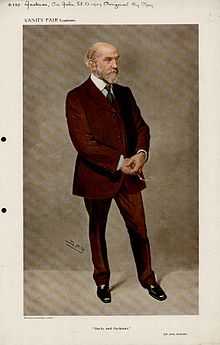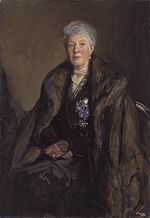John Jackson (UK politician)

Sir John Jackson (4 February 1851 – 14 December 1919) was a Unionist Member of Parliament for Devonport, from 1910–18, retiring from politics when his constituency was merged into another.[1]
Born at York, he worked in Newcastle before studying engineering at Edinburgh University under Peter Guthrie Tait. On Tait's death in 1901, Jackson endowed a research fund named after him.
His greatest engineering work in Britain from 1896-1907 was the extension of the Keyham Yard at Devonport Royal Dockyard at a cost of neary £4 million. During this period Jackson a member of The Plymouth Institution (now The Plymouth Athenaeum) from 1897-1899.[2]
He first stood for office as the Conservative candidate in the 1904 Devonport by-election, losing to Liberal candidate John Benn. He stood for the seat again in the 1906 general election and lost again. He was finally victorious in the January 1910 general election, winning the seat again in the December 1910 general election and standing down at the 1918 general election.

Jackson married Ellen Julia Myers in 1876. They had five daughters.[3]
References
- The Times Obituary 16 Dec 1919
- Leigh Rayment's Peerage Pages
- ↑ "Historic People". Plymouth Athenaeum. Retrieved 7 November 2014.
- ↑ "Historic People". Plymouth Athenaeum. Retrieved 7 November 2014.
- ↑ Christie's: Lotnote for the painting of Lady Jackson by John Lavery
Further reading
- Spencer-Silver, Patricia (2006), Tower Bridge to Babylon, The Life and Work of Sir John Jackson, Sudbury, Suffolk, UK: Six Martlets, ISBN 0-9544856-1-0
External links
- Hansard 1803–2005: contributions in Parliament by Sir John Jackson
| Parliament of the United Kingdom | ||
|---|---|---|
| Preceded by John Williams Benn Hudson Kearley |
Member of Parliament for Devonport January 1910 – 1918 With: Clement Kinloch-Cooke |
Succeeded by Clement Kinloch-Cooke |
|